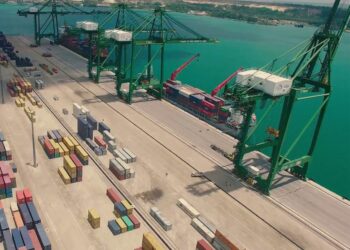Perhaps that literal metaphor would be useful to me: “The city is collapsing and I’m singing” and writing. Yes, there are lyrics that don’t fit into a song, and it would be pretentious to compose the Cantata de los Mártires del Salitre. But it’s impossible for me to walk impassively through the twisted empire of rust.
Some wise counselors say (be careful), that the saltpeter in Cuba is different from other coastal saltpeter. That the saltpeter in our sea is more powerful in terms of nitrate content, more concentrated than that of the Atacama or the Salar de Uyuni.
Hence the catastrophe of Cuba’s architectural heritage beyond the coast. Hence the state of the “Vista al Mar” (Sea View), the houses in the Náutico district, the old social and sports clubs of the former Marianao Beach.
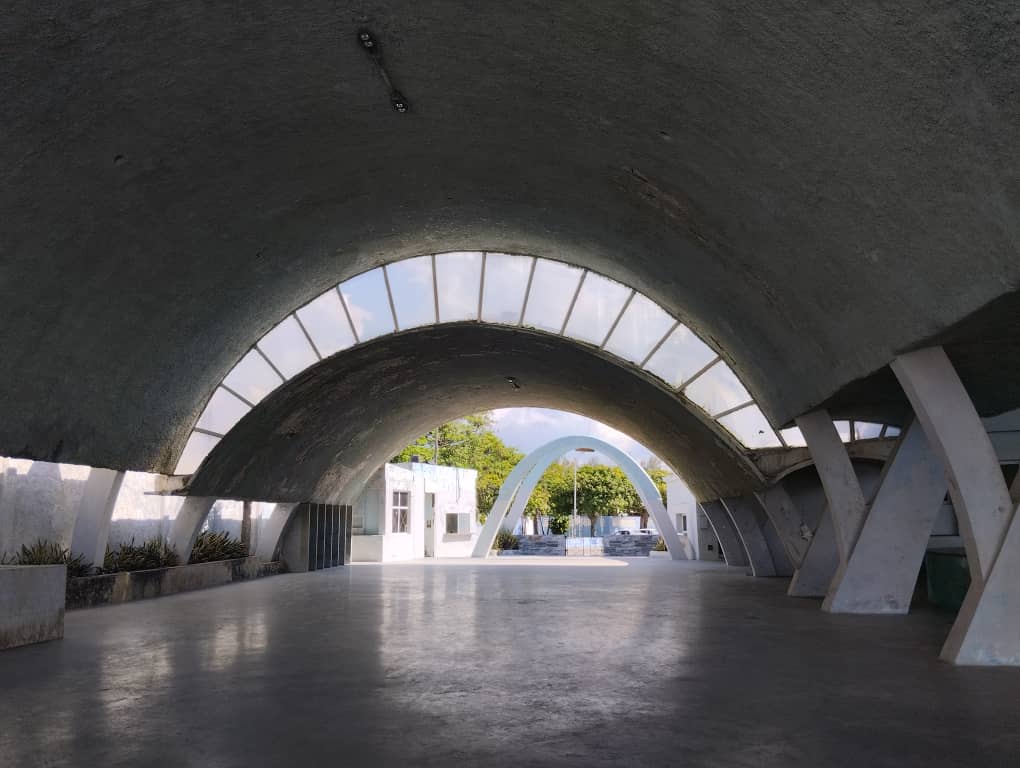
What would become of Venice dealing with Cuban saltpeter, or Las Palmas, or Kunghams, or Miami? Damned salty sea that surrounds us, despite everything, you won’t be able to defeat the new visionaries of Baracoa and Santa Fe who reinforce their houses with the ineffable Jaimanitas stone, the nummulitic, the shellfish, the sedimentary limestone rock, made up of skeletons and shells of aquatic animals and is the distinctive element of the fortresses of La Muralla, the Morro, La Cabaña and Atarés.
It wouldn’t be conducive to wander like an Eternaut through Dystopia. Sometimes the answer is simple and lies in history.
However, sometimes it resists; despite the confabulation of variables, it still resists. Like a reluctant and robust clamor. Like a timeless and metaphysical dolmen, it resists.
Sometimes it not only resists, sometimes the structure is almost intact. I’ve been trying for days to find the list of materials for the construction of the Havana Náutico Club, one of the iconic works of the Modern Movement in Cuban Architecture.
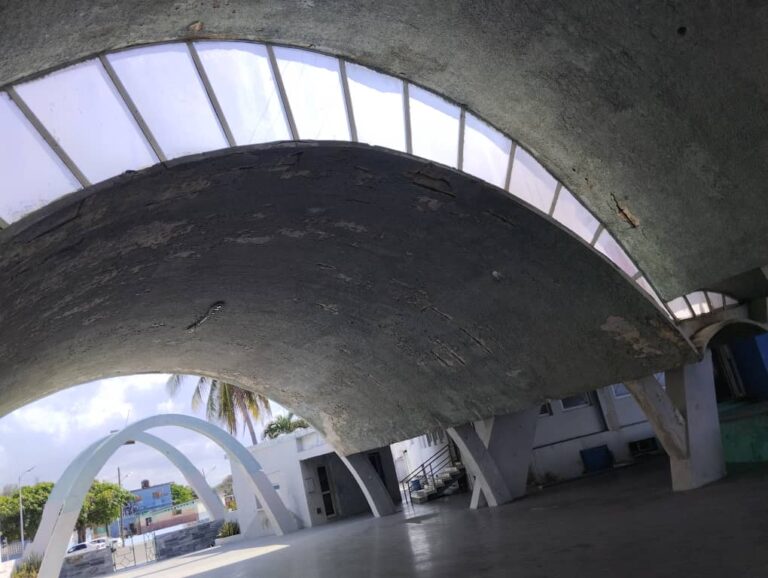
The Havana Náutico Club, also known as the Marianao Náutico Club (Félix Elmuza Workers Social Club), located at the end of 152nd Street in the current Playa municipality, was founded in 1933 by businessman Carlos Fernández Campos.
It was a middle-class club whose annual membership fee of 52 pesos was quite different from that of its neighboring Havana Yacht Club (now the Julio A. Mella Workers Social Club) or the Miramar Yacht Club (now Club Habana).
By the early 1950s, the Club’s membership was approaching 5,000, so the businessman was forced to resize it.
To this end, he called on architect Max Borges Recio (1918-2009), one of the city’s great poets (as architect Ricardo Porro liked to say), designer of iconic buildings such as the Neurological Hospital and the Partagás Building (16th and 23rd, Vedado), the Tropicana Cabaret and the original bus stops at 23rd and 41st (Kolhy neighborhood) and at 41st and 42nd, Playa.
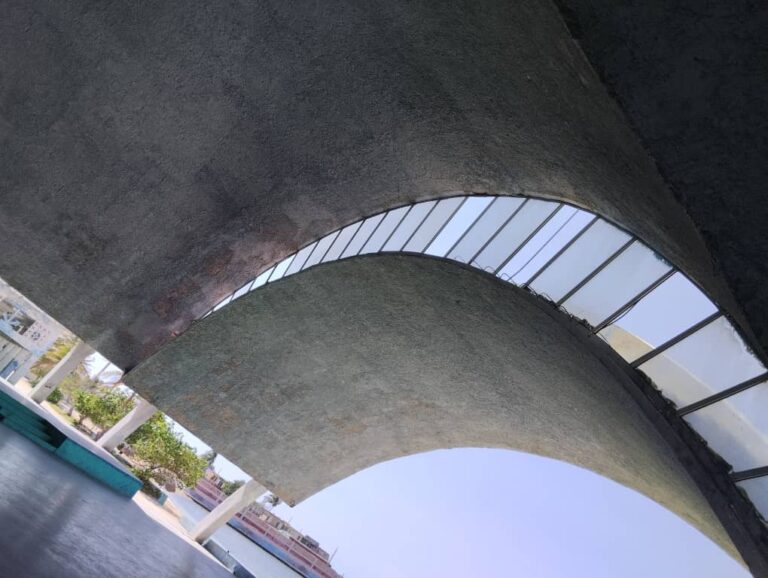
The result of the call was one of the most cited and studied constructions in Cuban architecture. Now, alongside the essential ticket office, the party and dance halls, a restaurant, a café, a bar, and a covered terrace that ran parallel to the sea were perfectly intertwined.
To carry out the work, Borges used a solution reminiscent of the one he used at the Tropicana Cabaret: a system of stepped vaults connected by metal structures and glass.
These skylights let in light, but never the sun. Thus, the Náutico Club, while not the most glamorous of the social clubs of the time, acquired the best covered dance floor in Havana, with its uneven surfaces and impressive granite floors.
The Náutico was, by far, the beach of my childhood, the center of our weekly excursions. We used to walk there from the Flores neighborhood and enter through the Club’s 1ra C entrance in the Náutico neighborhood.

Its maritime facilities were no longer operational. The shaft of the lifting crane reminded us of its rowing and sailing past. Tennis had been replaced by volleyball. But its Olympic-size swimming pool, its baseball field, its squash and handball courts, and my beloved playground with swings, chairs and seesaws were still in operation.
In addition, the Workers Social Club had two self-service cafeterias, a haven for croquettes and bulk malt drinks, a counter pizzeria with stools, with a small table selling Neapolitan pizzas, spaghetti and lasagna, the Bar Terraza, a refuge for my dad and Uncle Ñico, and a restaurant, also self-service, whose signature dish was Spaghetti al burro (much later I learned that “burro” means butter in Italian).
It was a Sunday in the late 1960s. I know this because I heard the word matinée for the first time. With my mom, my sister and my aunt Sara we occupied some of the colorful wooden lounge chairs on that covered terrace that ran parallel to the sea.
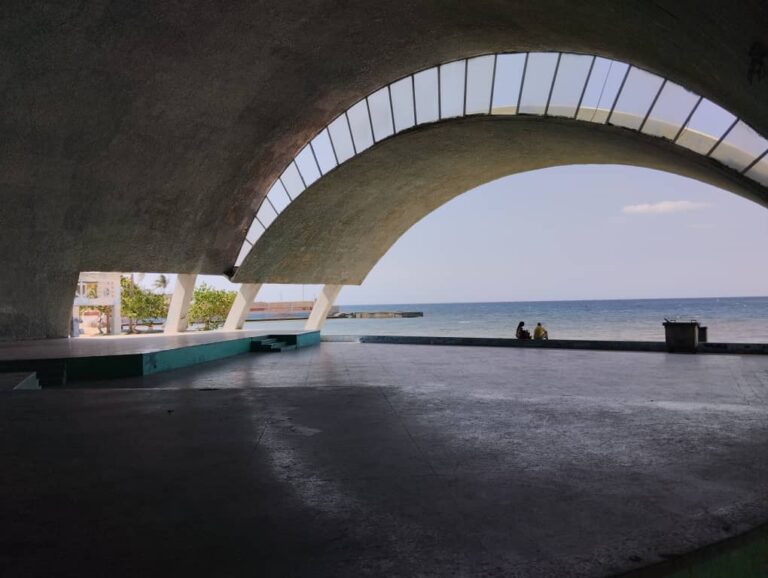
My dad and Uncle Ñico were enjoying some highballs (rum and ginger ale) at the bar above the pizzeria, where children weren’t allowed. On the stage of the large ballroom, an orchestra was getting ready. Scurrying through one of the rooms in the main building, I bumped into the great Felo Bacallao. A while later, peering indiscreetly through a restaurant window, I tried to decipher the immovable tangle of Pepe Olmos’s hair. There was no doubt. The Aragón orchestra was about to play.
The Aragón, a brass band-style band, had existed since 1939 and had been a popular favorite for 30 years; however, the place wasn’t crowded, despite their many hits. There were several families with children at that matinee. I remember that relaxed and cheerful atmosphere. Years later, Marianao Beach became a “risk zone” because of the dances held at its social clubs.
At that time, the Aragón was directed by Rafael Lay Apesteguía (violinist and choir) and also featured Richard Egües, arranger, composer and flautist (composer of “El bodeguero”). Celso Valdés Santandreu and Dagoberto Pascual González excelled on the violins. The combination of the wood-keyed flute, the violins, the unison vocals with sweet melismas by Lay, Pepe Olmos and Bacallao, and the closing kettledrum of Orestes Varona were the Aragón’s distinctive and inalienable hallmark.
The orchestra was completed by bassist José Ramón Beltrán, José Cristóbal Palma Perelló on piano, Panchito Arboláez on guiro and Guido de Jesús Sarría on the conga drum. Alejandro Tomás Valdés Soa (Tomasito), cellist, great dancer and creator of the “chaonda” rhythm, and the charismatic conga drum player Guillermo Gonzalo García Valdés (Guillermito Cabecita), weren’t yet in the orchestra.
Even though I was a child, I was one of those who had the most fun at that matinee. Despite my age, I was a true Aragón fan and knew almost all the songs. It was my first dance and, I think, my first big live concert.
From the moment it started out with the “Aragón, Aragón… si tú quieres un rico danzón, ponle el cuño…” line, it was all euphoria and singing (by the way, the Aragón’s opening theme was written by Enrique Jorrín, who was literally “the competition”; what solidarity back then).
I really enjoyed the classics, and in fact, my mother taught me a lesson on the song “Cero codazos,” a boxing song by Rafael Lay that I called “Rompan limpio” (“Les pido a los seconds que no me mojen la esquina…”). Then came “Qué bien estamos” and “Sabrosona,” also by Lay.
“El bodeguero,” “Cero penas,” and “Felicidades, Gladys” by Richard Egües, and the wise and humorous “Chaleco,” co-authored with Orestes Varona (“Engáñame bien, chaleco, que te conocí sin mangas…”). We had our share of “Pare cochero” by Marcelino Guerra and “Aquel pañuelito blanco” by Enrique Bonne. (Incidentally, the Aragón used the montuno from another Bonne song, “Pepe cabecita,” composed for Pacho Alonso for a traffic campaign and later changed to “Guillermito cabecita.”)
And for less experienced dancers, like my dad and Uncle Ñico (my cousin Gisela was a beautiful teenager and could already go out alone, so she wasn’t there that afternoon), there was danzón, the dance almost ad libitum. “Hasta la Reina Isabel baila el danzón…” by Electo Rosell (Chepín Chovén).
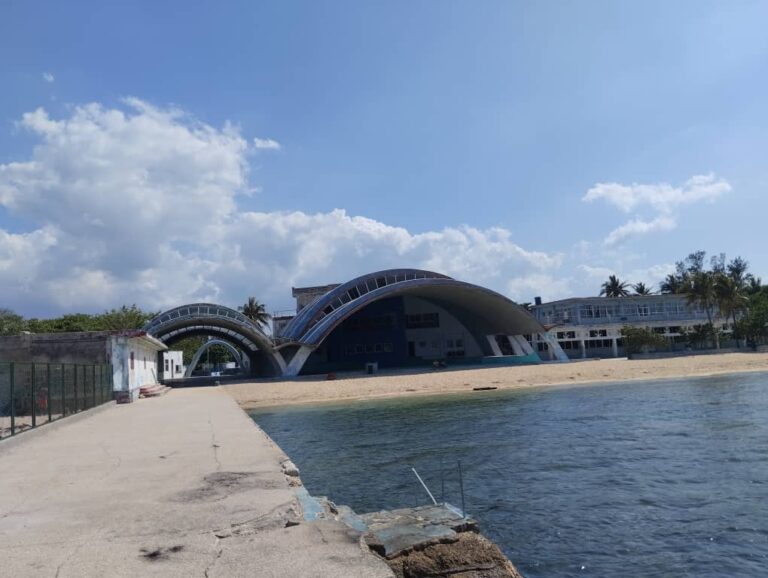
But the Aragón didn’t just live off the classics; the orchestra had reinvented itself and taken on contemporary themes, with new arrangements without losing its mark, and they had been resounding hits. So I enjoyed “Busca los lentes” by Rolando Vergara, “Ven ven morena” by Ramón Paz, “Pregúntame cómo estoy” and “Mi son es un vacilón” by Julio César Fonseca, “No me molesto” by Jorge Zamora, and, although my mother doesn’t remember, I swear I heard the orchestra that day with Las D’Aida performing “Ajá, viví” by maestro Félix Reina, with Teresa Caturla singing the lapidary phrase “…y para el amanecer mi mamá me obligó a casarme con él…” (Misplaced as “Jajá, viví,” it was a colloquial phrase in those years.)
The orchestra left the most requested songs for last, and while Uncle Ñico tried to theorize about Felo Bacallao’s juggling moves (whether he put salt on the floor, or whether his shoes were special. In any case, Felo was the precursor to the Moonwalk, and I’m left speechless every time I see his performance), they launched into “Un final repente.”
The song had been a hit sung by young Maggie Carlés, but Aragón’s arrangement was priceless. We all sang along. The end was approaching, and everyone was requesting the same song. Lay, Richard, Felo and Olmos had embraced modernity and dared to take on that new rhythm created by Holguín native Juanito Márquez, influenced by the Venezuelan joropo, which the conga drum player struck with a stick on the shell of the instrument, the “pa’ca.” It was a collective madness, absolute insanity. I clung to Migdalia gratefully and said,
“Oh, this party is so great, Mom.”
She, as if forgiving me, hugged me and said,
“Oh, come over here, Nené.”







